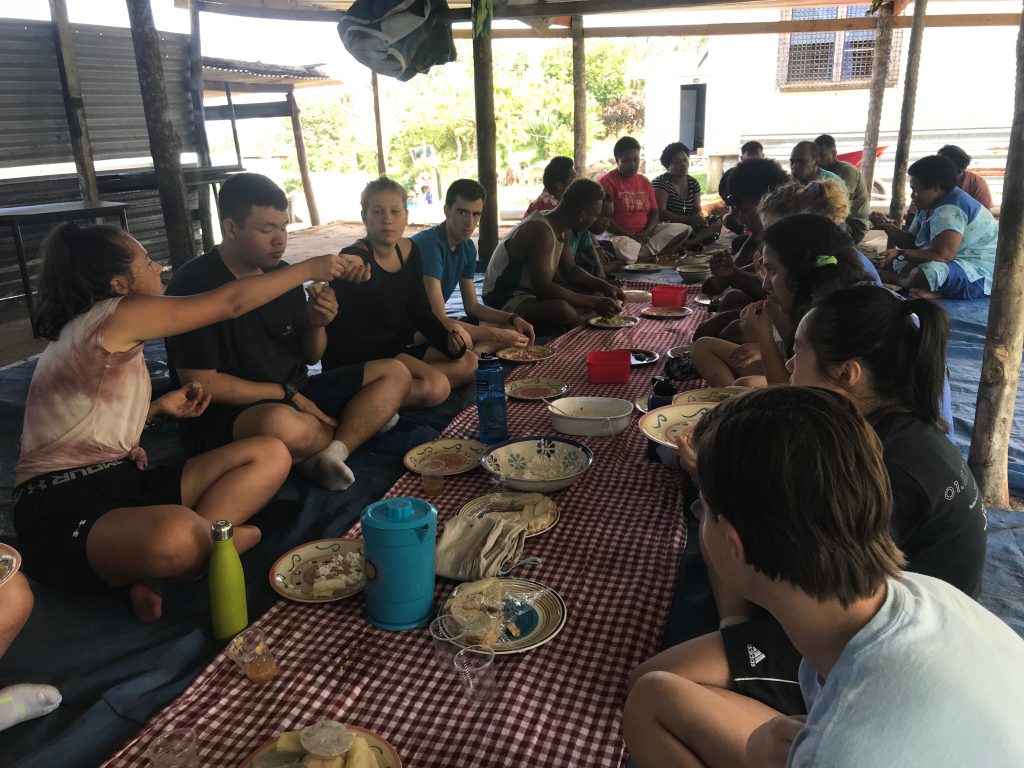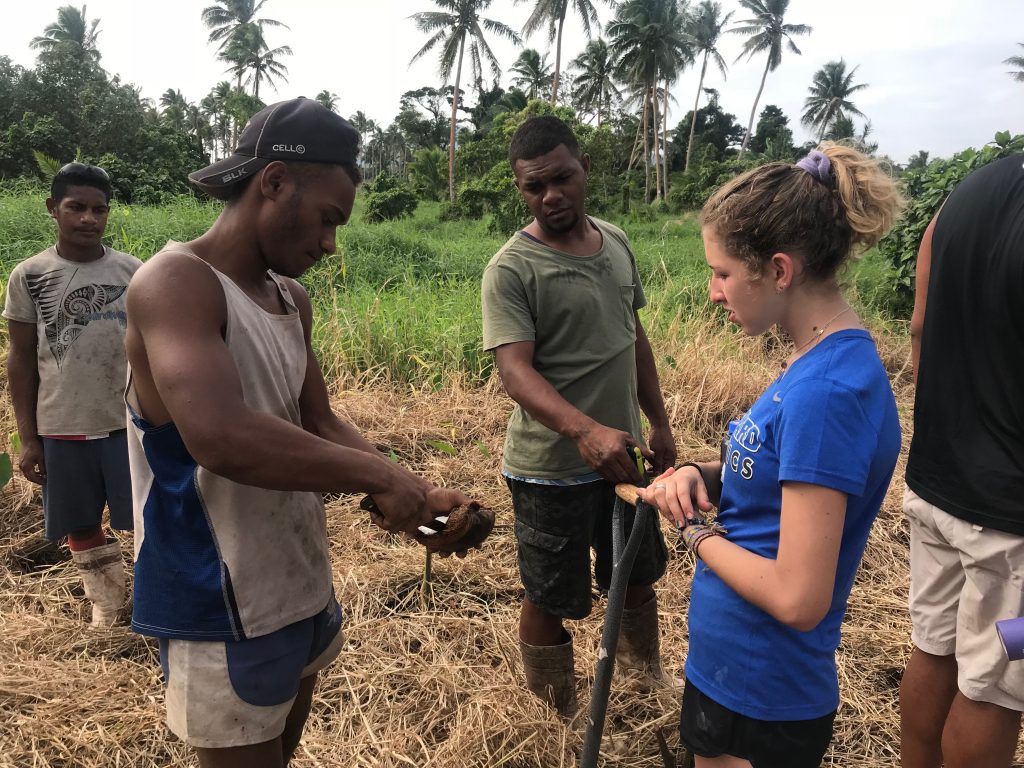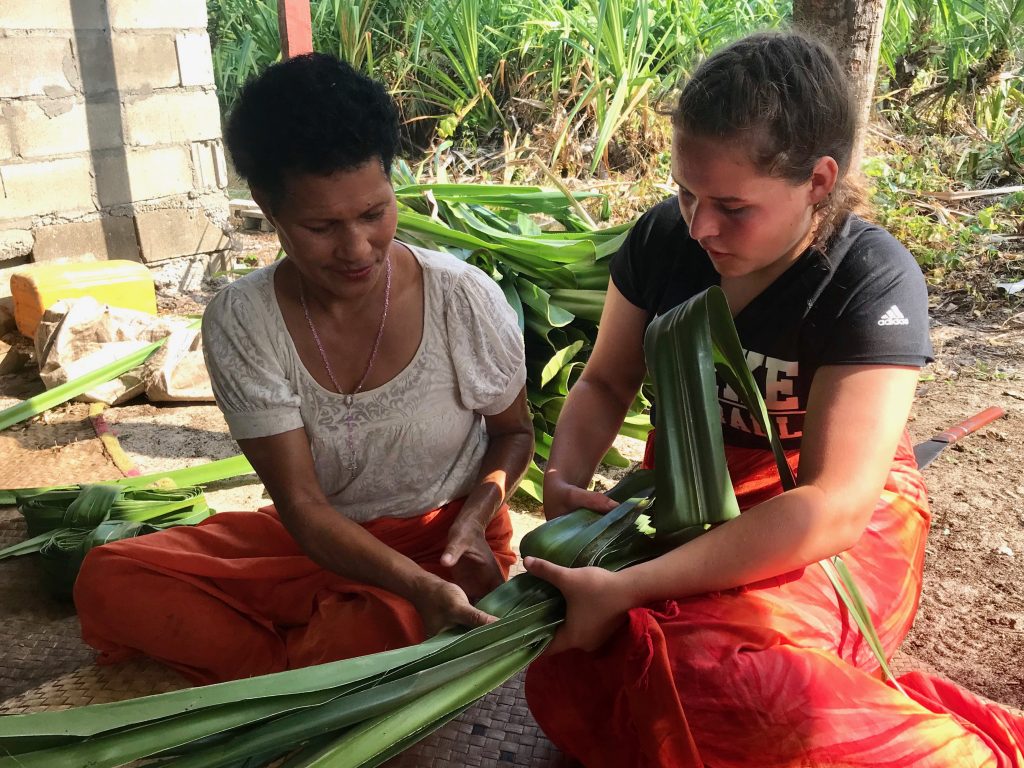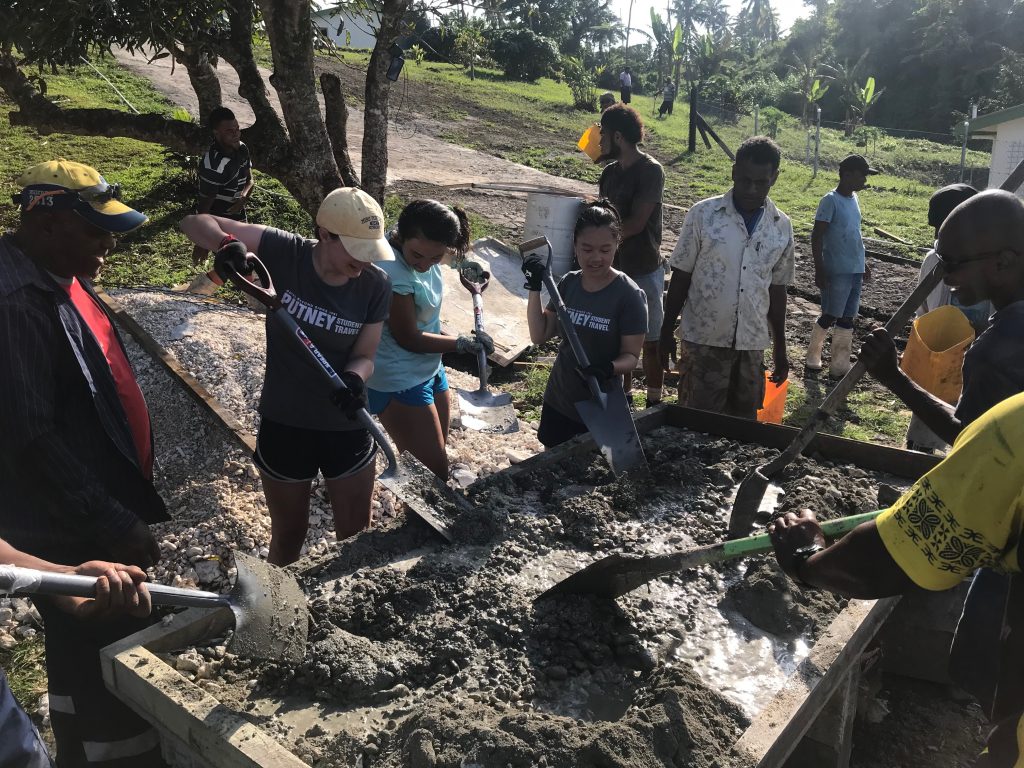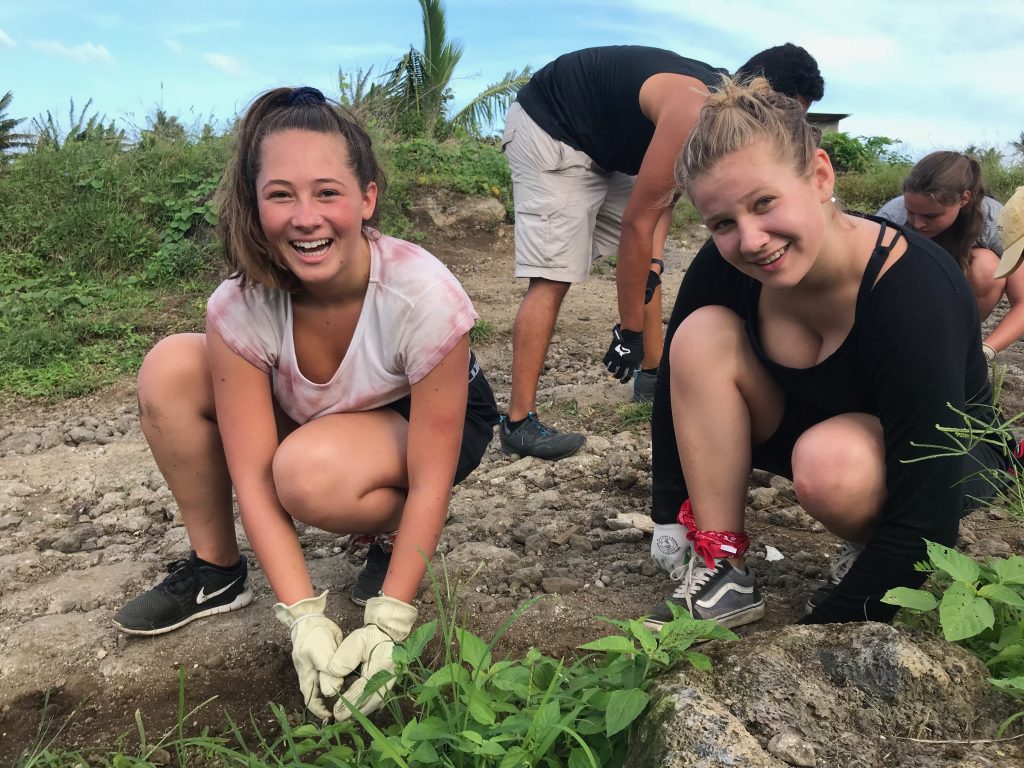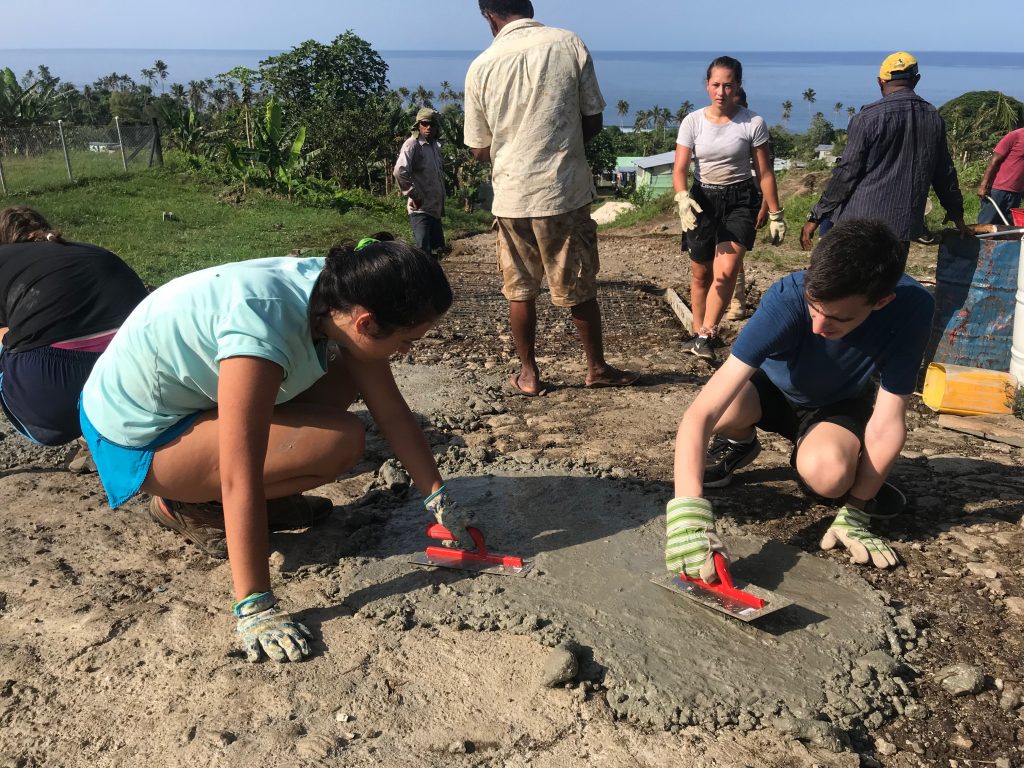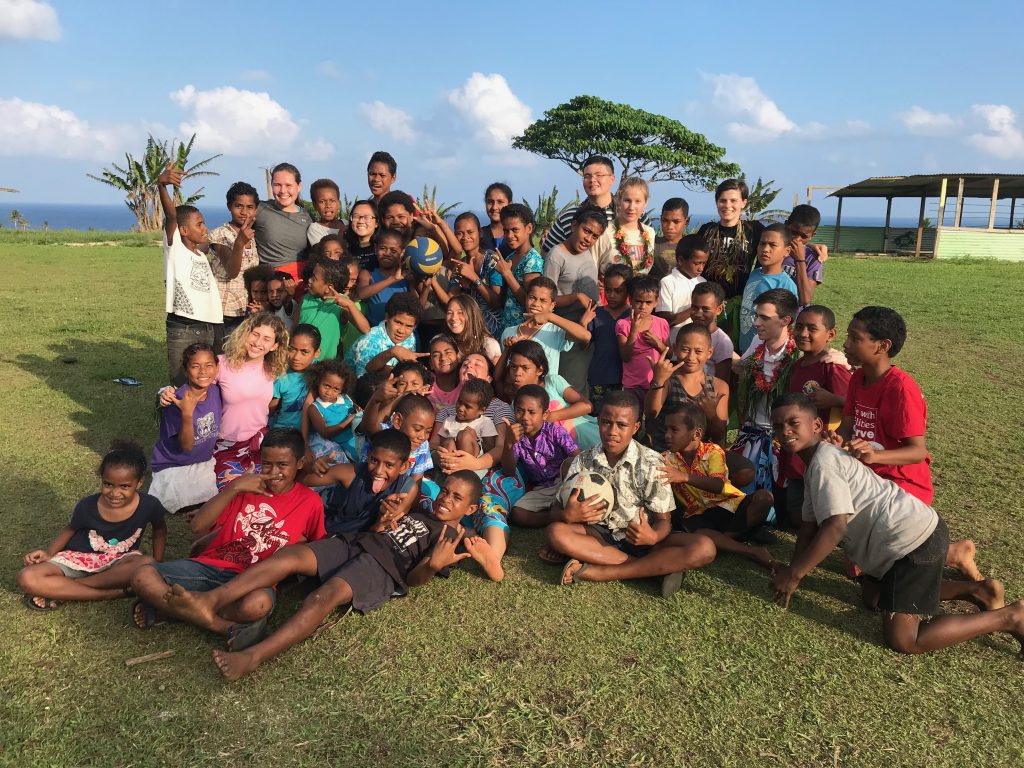
After a relaxing few days getting to know each other and being introduced to Fijian culture, we left Maravu to take a long drive down the west side of the island to Navakawau Village. On our way down to the village we stopped in Naqara for groceries and sulus. Sulus are a light piece of fabric you wrap around your waist, similar to a sarong. Women in the village wear them daily, and men wear them for formal attire. When we arrived in the village, we put on our sulus and headed to the gathering place for sevusevu, a formal welcoming ceremony. At the ceremony, elders of the community gave speeches and we participated in drinking kava. Some of the boys in the village also performed a meke traditional dance for us. The students said they felt a great sense of respect during the sevusevu. After the sevusevu was over, the group was surrounded by the younger children hoping to meet and play with the new arrivals. As the students described it, the language barrier did not matter and they felt an unconditional love as they were welcomed into the village.
There is a Peace Corps volunteer in the village, Courtney – or “Queenie” as she’s called by the locals – who has been in Navakawau for almost 10 months. She has been a helpful resource for our group as we learn to navigate new social customs and understand a culture very different from our own. Our coordinator in the village, Master Leone, has arranged for us to learn more about Fijian life through cultural activities with locals. So far, we have visited a farm to learn how they plant and harvest two of their staple crops: dalo (taro) and kava. We also spent an afternoon with a group of village women to learn more about weaving and making coconut oil. On Sunday we joined the villagers at church, and students were moved by the strong sense of community during the service and beautiful harmonized singing. Other highlights from our time here so far: meals in the village, swimming in the ocean, bucket showers, and a dance party with village children.
Yesterday, we finally started our big service project. After Cyclone Winston destroyed most of the buildings in the village in 2016, the Fijian government helped build new permanent school buildings and teacher housing on top of the hill overlooking the village. While construction vehicles were traveling up and down the hill, they badly damaged the road leading from the village to the school, which all the village children must use to walk to school. The road now is mostly rubble with large potholes and some metal wire exposed. We are working with crews of men from the village to repave the road, which is a difficult task without heavy machinery or power tools. Yesterday’s work involved prepping the existing road by digging trenches for wooden formwork, breaking apart old concrete, removing large rocks, pulling unwanted grass, and hauling wheelbarrows of rocks to fill holes. Today we began paving the road with a mixture of cement, sand, and coral – all mixed by hand! Students took turns shoveling sand and coral, mixing cement, and smoothing the poured cement with trowels. We brought a speaker and took turns playing music to keep the energy up. We’ve made some great progress so far, but we still have a long road ahead! (get it…? Road?! We crack ourselves up.)
Moce (goodbye) for now,
Jolene and Andrew
